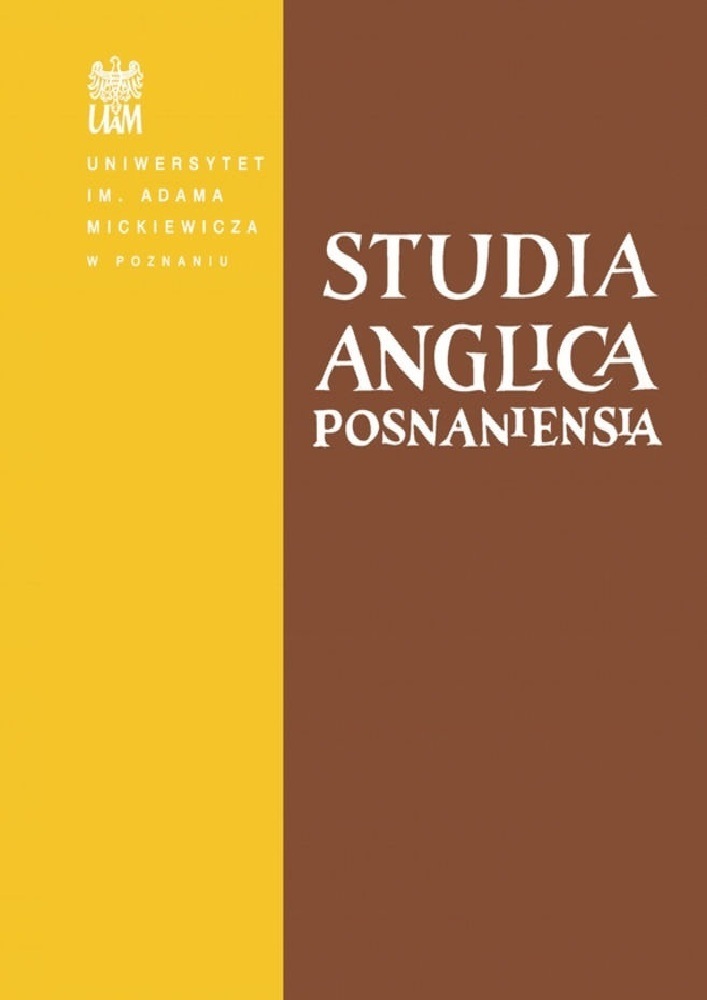Abstract
Exploring the structural function of time in the play and its relation to this redemptive moment, in which Hermione’s body comes to represent a translation into human terms of a Neoplatonic idea of cosmic order, reveals how the play, beyond offering an idle meditation on art and nature, articulates a profoundly moral vision of existence, and will supply a useful framework for further critical investigations of both the play itself and Shakespearean romance as a whole.
References
Plato. 1956. Symposium. Translated by Benjamin Jowett. London: Prentice Hall.
Plotinus. 1991. The Enneads. Translated by Stephen MacKenna. (Abr. edn.) London: Penguin.
Shakespeare, William. 1999. The Winter’s Tale. Edited by Frances Dolan. (Rev. edn.) New York, NY: Penguin.
Shakespeare, William. 2000. King Lear. Edited by Stephen Orgel. (Rev. edn.) New York, NY: Penguin.
Bakhtin, Mikhail. 1981 [1938]. Forms of time and of the chronotope in the novel. In Michael Holquist (ed.), The dialogic imagination: Four essays by M. M. Bakhtin. Translated by Caryl Emerson & Michael Holquist, 84–258. Austin, TX: University of Texas Press.
Barkan, Leonard. 1981. ‘Living sculptures’: Ovid, Michelangelo, and The Winter’s Tale. ELH 48(4). 639–667. DOI: 10.2307/2872955
Barthes, Roland. 1972. The face of Garbo. In Roland Barthes, Mythologies (translated by Annette Lavers), 56–57. New York, NY: Hill & Wang.
Benkert, Lysbeth. 2015. Faith and redemption in The Winter’s Tale. Religion and the Arts 19(1–2). 31–50. DOI: 10.1163/15685292-01901002
Bloom, Harold. 1998. The Winter’s Tale. In Harold Bloom, Shakespeare: The invention of the human, 639–661. New York, NY: Riverhead.
Engel, William E. 2013. Kinetic emblems and memory images in The Winter’s Tale. In Andrew J. Power & Rory Loughnane (eds), Late Shakespeare 1608–1613, 71–87. Cambridge: Cambridge University Press. DOI: 10.1017/CBO9781139060189
Ewbank, Inga-Stina. 1995. The triumph of time in The winter’s tale. In Maurice Hunt (ed.), The Winter’s Tale: Critical essays, 139–155. New York, NY: Garland.
Felperin, Howard. 1995. Our Carver’s Excellence: The Winter’s Tale. In Maurice Hunt (ed.), The Winter’s Tale: Critical essays, 220–242. New York, NY: Garland.
Fletcher, John. 1897. To the reader. In Frederic Moorman (ed.), The faithful shepherdess, 6–7. London: Dent.
Frye, Northrop. 1971. Anatomy of criticism: Four essays. Princeton, NJ: Princeton University Press.
Gurr, Andrew. 1983. The bear, the statue, and hysteria in The Winter’s Tale. Shakespeare Quarterly 34(4). 420–425. DOI: 10.2307/2869858
Gusain, Renuka. 2013. ‘With what’s unreal thou coactive art’: The problem and possibilities of beauty in The Winter’s Tale. Shakespeare 9(1). 52–75. DOI: 10.1080/17450918.2012.705874
Hillman, Richard. 1985–1986. The Tempest as romance and anti-romance. University of Toronto Quarterly: A Canadian Journal of the Humanities 55(2). 141–160. DOI: 10.3138/utq.55.2.141
Hunt, Maurice. 2003. Visionary Christianity in Shakespeare’s late romances. CLA Journal 47(2). 212–230.
Hunt, Maurice. 2008. Shakespeare, his contemporaries, and the religions of his time. Religion and the Arts 12(4). 585–601. DOI: 10.1163/156852908X357425
Hunt, Maurice. 2011. Syncretistic religion in Shakespeare’s late romances. South Central Review 28(2). 57–79. DOI: 10.1353/scr.2011.0019
Jensen, Phebe. 2004. Singing psalms to horn-pipes: Festivity, iconoclasm, and Catholicism in The Winter’s Tale. Shakespeare Quarterly 55(3). 276–306.
Joughin, John J. 2000. Shakespeare, modernity and the aesthetic: Art, truth and judgment in The Winter’s Tale. In Hugh Grady (ed.), Shakespeare and modernity: Early modern to millennium, 61–84. London: Routledge.
Lindenbaum, Peter. 1995. Time, sexual love, and the uses of pastoral in The Winter’s Tale. In Maurice Hunt (ed.), The Winter’s Tale: Critical essays, 200–219. New York, NY: Garland.
McDonald, Russ. 1996. The Bedford companion to Shakespeare. Boston, MA: Bedford.
Ronk, Martha. 1996. Disjunction and subjectivity in The Winter’s Tale. The Upstart Crow 16. 124–140.
Sokol, B. J. 1994. Art and illusion in The Winter’s Tale. Manchester: Manchester University Press.
Tambling, Jeremy. 2015. The Winter’s Tale: Three recognitions. Essays in Criticism 65(1). 30–52. DOI: 10.1093/escrit/cgu024
Vanita, Ruth. 2000. Mariological memory in The winter’s tale and Henry VIII. Studies in English Literature 1500–1900 40(2). 311–337. DOI: 10.1353/sel.2000.0021
Waage, Frederick O. 1980. Be stone no more: Italian cinquecento art and Shakespeare’s last plays. Bucknell Review: A Scholarly Journal of Letters, Arts, and Science 25(1). 56–87.
Wojciehowski, Hannah Ch. 2014. Statues that move: Vitality effects in The winter’s tale. Literature and Theology 28(3). 299–315. DOI: 10.1093/litthe/fru022
